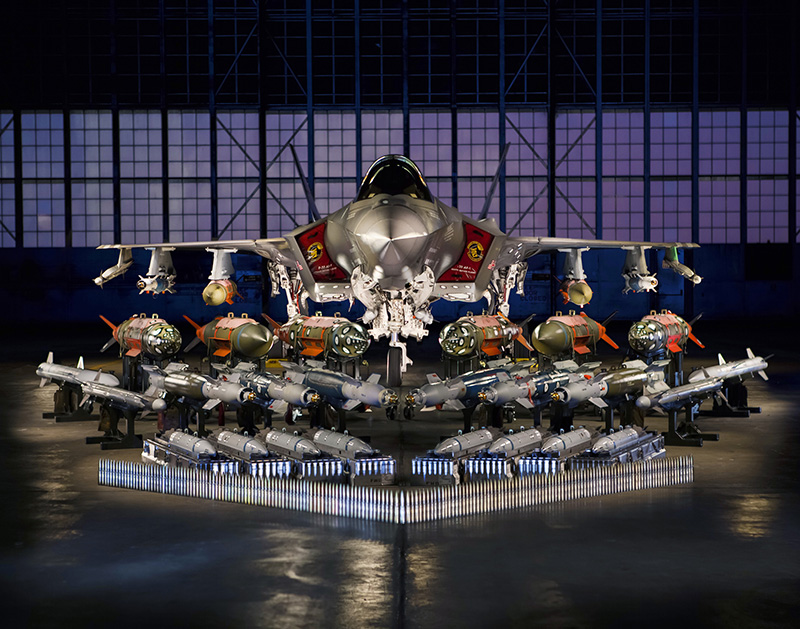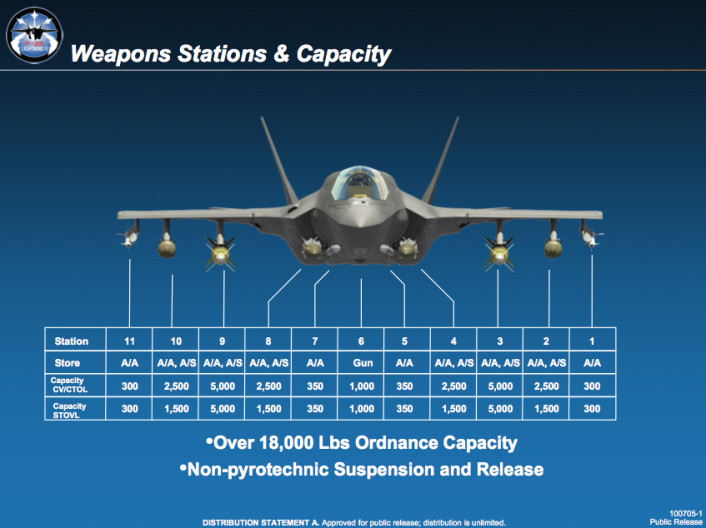The F-35 and its weapons suite.
Top image shows an F-35A, at Edwards AFB, California,nexto to its F-35 Systems Development and Demonstration Weapons Suite the aircraft is designed to carry.
According to Lockheed Martin, the Joint Strike Fighter can carry more than 35-hundred pounds of ordinance in Low Observable (stealth) mode and over 18-thousand pounds uncontested.
The Lightning II is conducting testing required for full weapons certification through a campaign which included validating 2B weapons software and successfully executing several weapons separation and engagement tests.
“Comprehensive flight test on the F-35A variant GAU-22 25mm gun system is scheduled to begin mid-year at Edwards AFB, Calif., and will include ground fire tests, muzzle calibration, flight test integration and in-flight operational tests. The 25mm missionized gun pod carried externally, centerline mounted on the F-35B and F-35C also begins testing this year to meet U.S. service’s desired schedule for full warfighting capability software known as 3F. The 3F software is currently planned for delivery with the Low Rate Initial Production nine (LRIP 9) U.S. aircraft in 2017,” Lockheed Martin team say in a press release.
Among the most recent tests there is the first separation test of a GBU-39 Small Diameter Bomb, a 250-lb. precision-guided glide weapon (Oct. 21) and multi-separation test (Nov. 20); first external flutter tests flown with the AIM-132 Advanced Short Range Air-to-Air Missile (ASRAAM) (Oct. 29) and Paveway IV missiles (Nov. 13); and the first supersonic-guided missile launch and the first JDAM release on target coordinates generated from the Electro-Optical Targeting System (EOTS) (Nov. 18-25 ).
The photo and updated weapons integration status report come few weeks after a report claimed the F-35 will be unable to use its gun until 2019.
Lockheed Martin Photo by Matt Short
















